Roland Fuhrmann
POLAR STAR TUBE α UMi
Location: Bärwalder See, Uhyster Ufer (manor view axis)
The entire universe revolves around Lake Bärwald - at least it does when we peer through the viewing tube of Roland Fuhrmann's sculpture "α UMi". Polaris, the polestar - referred to by astronomers as "Alpha UMi" - is strikingly visible even at dusk above the northern banks of the lake. Polaris marks the extension into outer space of the axis of the Earth's rotation. Seen from the Earth, it is the sole point in the universe that appears to remain stationary. The star is perpetually visible at the center of the tube, theoretically during the daytime, and actually during the nighttime.
This simple tube directs our view toward the point in the universe around which everything seems to turn. Through this undistracted, concentrated gaze, we pause for a moment, entering into communion with this cosmic point of tranquility.
This "telescope" simply aims the focus at "Alpha UMi", which is in reality a constellation of stars. The extraordinary luminosity of this grouping renders lens systems superfluous. Even in this small section of the nocturnal sky and under less than ideal viewing conditions, it is easily recognizable.
At the latest during the 17th century, baroque gardens and landscape parks, with their axial symmetry and geometrical layouts, followed the laws of the cosmos. The Manor Park of Uhyst is no exception. Laid out in 1740, its axially symmetrical orientation, which radiates from the building, is still readily perceptible despite later alterations. With the redesigns which accompanied the renaturation of this brown coal region and the area adjoining Lake Bärwald, this axis was extended from the entry side of the baroque mansion. This logical solution, arrived at by contemporary landscape designers, would surely have met with the approval of the original creator, Friedrich Caspar Reichsgraf von Gersdorf. The new viewing axis not only incorporates the lake itself, but the imposing Boxberg Power Station lying on the opposite bank as well. Its striking silhouette acts as a counterpart to the rich history of Uhyst, and a contemporary instance of an "architecture of authority". For have not modern societal conditions - and ultimately aesthetic ones as well - been shaped by industrial architecture, particularly during the 20th century? In this sense, the view axis emanating from Uhyst can also be understood as a walkable timeline, one leading from the past into the present.
The baroque garden estate as a depiction of a paradisal world, one that is at the same time permeated by logic. Both in a cosmic and in a spiritual sense, this idea is to represent heaven on Earth. In order to render such symbolism and such spatial dimensions perceptible, view axes were and remain an indispensable resource. In the late 20th century, Charles Jencks, an American garden designer and theoretician of Postmodernism, was fascinated by the idea of choosing a garden to represent the cosmos, or at least certain ideas associated with it. In Scotland, he laid out his "Garden of Cosmic Speculation". Jencks too sought to combine complex designs based on historical parks with contemporary investigations in the natural sciences and the humanities, thereby shaping physically accessible images composed of all manner of sculptural and vegetal elements. According to this conception, the park serves simultaneously as a setting for recreation and for the acquisition of knowledge.
With the "α UMi" axis, a similar park idea, one whose origins lie in the 17th century, is extended all the way into outer space. During the baroque, sculptures of Venus often stood at the termini of view axes - and the evening star received her name. That planet's astronomical symbol still alludes to the mirror in which the goddess of the beauty admired herself, and from which a reflection leapt out into the surrounding space. In this sense, Roland Fuhrmann's "α UMi" is also a highly poetic allegory for the power of mythology, which continues to move us when we contemplate nature - despite all of our rationalistic disenchantment. With the manorial estate of Uhyst and its distinctive park, we gaze out onto the sea and the polar star, sensing the unfathomable depths of the cosmos. The backdrop of the power station is superimposed perpetually onto this contemplative setting. But when we peer through the viewing tube, this massive complex is erased from our field of vision, from our awareness. For a brief moment, the universe does indeed revolve around Lake Bärwald.
B i o g r a p h y
| 1966 |
born in Dresden, lives in Berlin
|
| 1991 - 1995 |
studies at the Hochschule für Kunst und Design Halle/Burg Giebichenstein
|
| 1995 - 1997 |
studies at the Ècole Nationale Supérieure des Beaux-Arts
in Paris with C. Boltanski
|
| S c h o l a r s h i p s |
| 2008 |
POLLEN, Monflanquin, France |
| 2000 - 2001 |
German-French Cultural Council |
| 2000 |
Kaiserringstipendium, Mönchehaus Museum Goslar |
| 1997 - 1998 |
Graduiertenstipendium from the Federal State of Sachsen-Anhalt |
| 1997 |
working scholarship from the Stiftung Kulturfonds Berlin |
| 1995 - 1996 |
DAAD one year scholarship for Paris
|
| S o l o e x h i b i t i o n s |
| 2009 |
Hamish Morrison Galerie, Berlin |
| 2008 |
POLLEN, Monflanquin, France |
| 2006 |
Museum Goch |
| 2004 |
Spielhaus Morrison Galerie |
| 2000 |
Mönchehaus Museum für Moderne Kunst Goslar
|
| A r t i n p u b l i c s p a c e s |
| 2008 |
Venus from Minden, Minden / Westfalen |
| 2005 - 2008 |
Red Mountain / Rathaus Goch |
| 2006 |
Driving Rhythm / Palucca Schule Dresden |
| 2003 |
Sand Bench / Bitterfeld |
| 2001 |
Ornisonorium / MLU Halle-Saale |
| 2001 |
Thread of Life / MLU Halle-Saale |
| 2000 |
Rainy Way / Stadtwerke Halle-Saale |
| 2000 |
Max Planck Structure, MPI Halle-Saale |
| 2000 |
Tranquillité / Mönchehaus Museum Goslar |
| 1998 |
Light Encounter / Stadtwerke Halle |
| www.rolandfuhrmann.de |
|
|
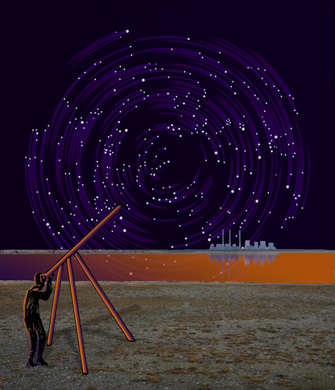
Polarsternrohr - Astrale Skulptur
innerhalb des Projektes "Über-Tage"
in Uhyst am Bärwalder See, 2009 |
| |
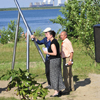 |
|
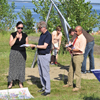 |
|
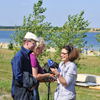 |
| |
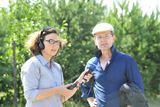 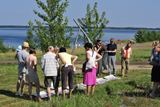 |
| |
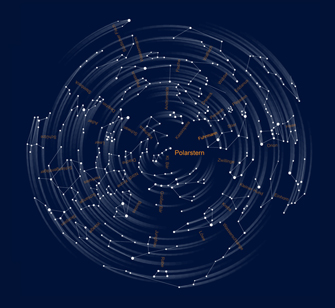
Sternenkarte |
| |
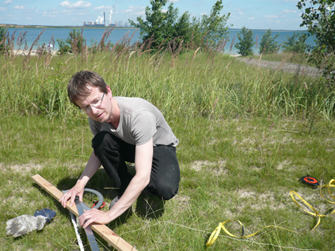
Roland Fuhrmann beim Vermessen
und Markieren des Standorts, Juli 2009 |
| |
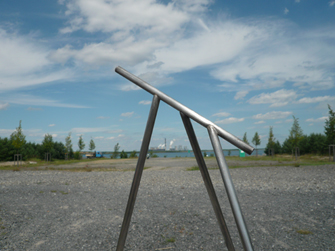
Das Polarsternrohr am Bärwalder See (Modell) |
| |
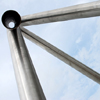 |
|
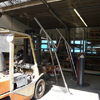 |
|
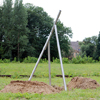 |
|